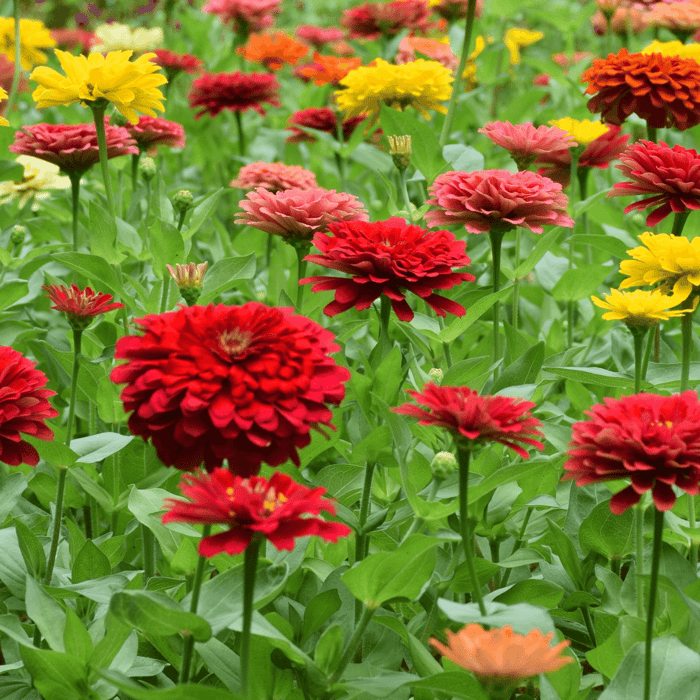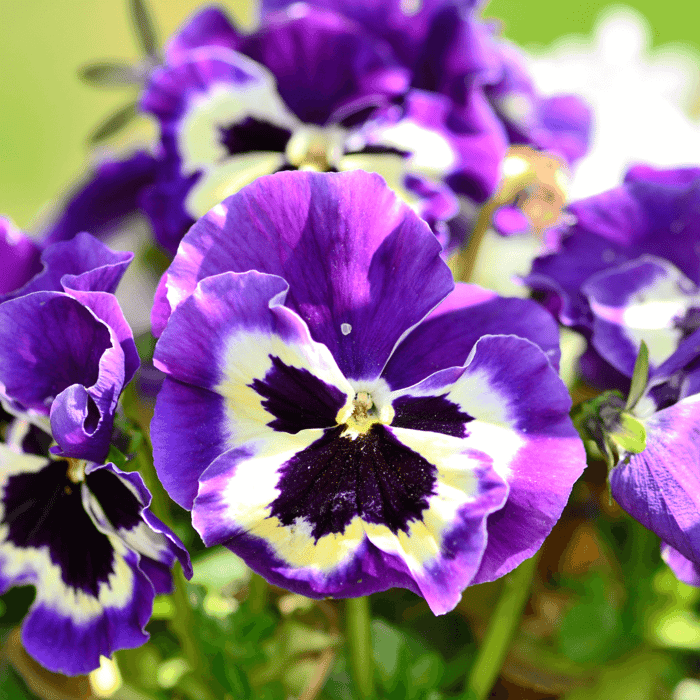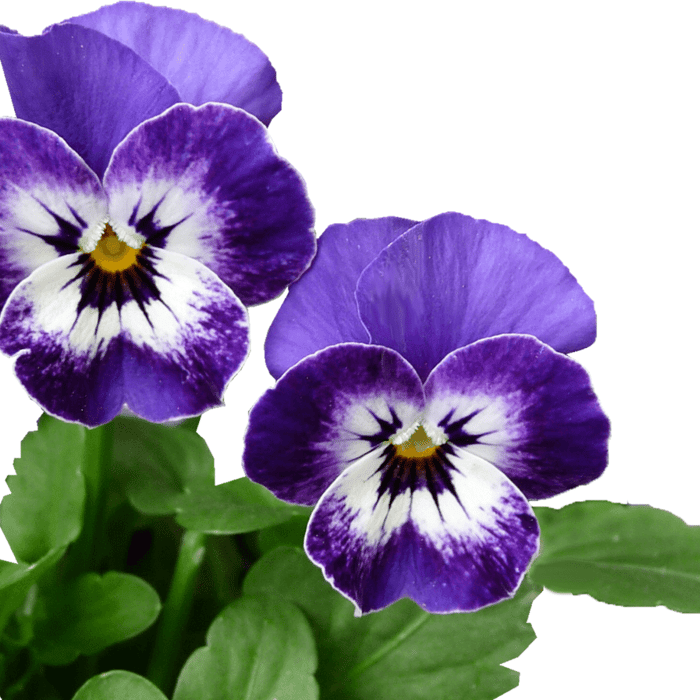As a gardener, I've always been drawn to the beauty and versatility of cornflowers. These lovely flowers are not only easy to grow but also add a vibrant touch to any garden. In this article, I'll be sharing my knowledge on how to grow cornflowers from seed, covering everything from planting and germination to caring for these delightful blooms throughout their growing season.
To make it easier for you to navigate this in-depth guide, I've broken it down into eight sections, each focusing on a specific aspect of growing and caring for cornflowers.
- Introduction to Cornflowers
- Choosing the Right Cornflower Variety
- Preparing the Soil and Garden Bed
- Planting Cornflower Seeds
- Caring for Your Growing Cornflowers
- Pest and Disease Control
- Harvesting and Enjoying Your Cornflowers
- Cornflower Plant Characteristics
1. Introduction to Cornflowers
Cornflowers (Centaurea cyanus), also known as bachelor buttons, are easy-to-grow annual flowers that come in various colors, including blue, pink, purple, and white. They are popular cut flowers and attract pollinators, making them a valuable addition to any garden.
Growing cornflowers from seed is a straightforward process, and they can be started indoors or directly sown into the garden. These flowers thrive in full sun and well-drained soil, making them a perfect choice for a cutting garden or border.
Dwarf Cornflower (Bachelor Button) Polka Dot Mix Seeds
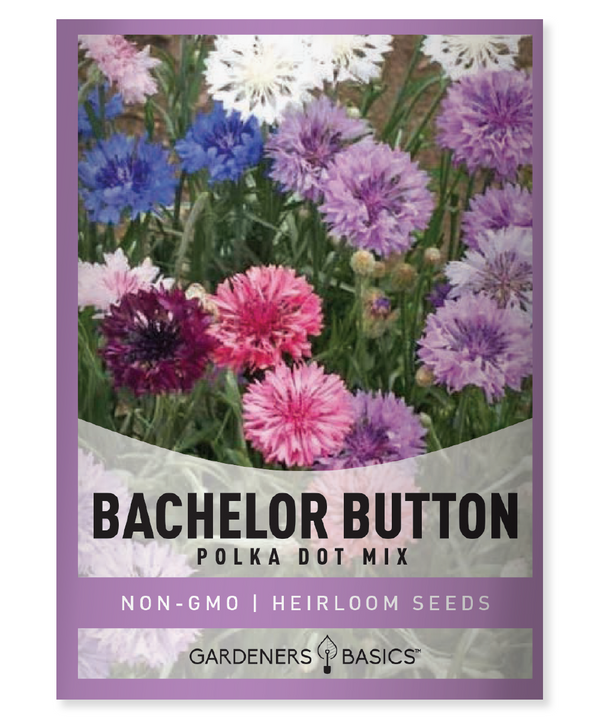
$2.49
Dwarf Cornflower Bachelor Button Polka Dot Mix Seeds - Heirloom, Non-GMO, Non-Hybrid, Open-Pollinated Transform your garden into a kaleidoscope of color with our Dwarf Cornflower Bachelor Button Polka Dot Mix seeds! This vibrant mix produces charming, double-petaled flowers in shades… read more
2. Choosing the Right Cornflower Variety
There are several cornflower varieties to choose from, each with its unique characteristics. Some popular options include:
- Dwarf Cornflower Polka Dot Mix Seeds: A compact variety with a mix of blue, pink, purple, and white flowers, perfect for small gardens or containers.
- Cornflower Tall Mixed Seeds: A mix of colorful blooms on tall stems, ideal for creating a stunning backdrop or border.
- Cornflower Centaurea: A classic blue variety with a long history and striking color.
It's essential to choose the right variety for your garden, considering factors such as available space, desired height, and color preferences.
3. Preparing the Soil and Garden Bed
To grow cornflowers successfully, you'll need to prepare the soil and garden bed properly. Here are some steps to follow:
- Choose a location with good air circulation and full sun: Cornflowers thrive in sunny spots, and good air circulation helps prevent fungal diseases such as powdery mildew.
- Prepare the soil: Amend the soil with compost or aged manure to improve its fertility and drainage. Ensure the soil has a pH of 6.0 to 7.0 for optimal growth.
- Create a well-drained garden bed: Loosen the soil to a depth of at least 12 inches to promote healthy root growth.
4. Planting Cornflower Seeds
Once your garden bed is ready, it's time to plant your cornflower seeds. Here's a step-by-step guide:
- When to plant cornflower seeds: Sow seeds in early spring when the soil temperature reaches at least 50°F (10°C). If starting indoors, plant seeds 4-6 weeks before the last expected frost date.
- Planting depth and spacing: Sow seeds about 1/8-inch deep and 12 inches apart to give the plants enough room to grow.
- Watering: Use a garden hose or watering can to gently water the seeds, ensuring the soil remains moist but not waterlogged.
5. Caring for Your Growing Cornflowers
As your cornflower seeds germinate and grow, it's essential to provide them with proper care to ensure a healthy, beautiful display. Follow these steps:
- Germination: Cornflower seeds typically germinate within 7-14 days. Keep the soil consistently moist but not soggy during this period.
- Thinning: Once seedlings have developed their first true leaves, thin them out to a final spacing of about 12 inches apart. This allows for proper airflow and prevents overcrowding.
- Watering: Water your cornflowers regularly, especially during dry periods, to maintain consistently moist soil. However, avoid overwatering as it can lead to root rot and other issues.
- Fertilizing: Apply a balanced, slow-release fertilizer at planting time and again halfway through the growing season to support healthy growth.
- Support: Taller varieties of cornflowers may require support, such as stakes or a trellis, to keep them upright and prevent them from flopping over.
Cornflower (Bachelor Button) Tall Mixed Seeds
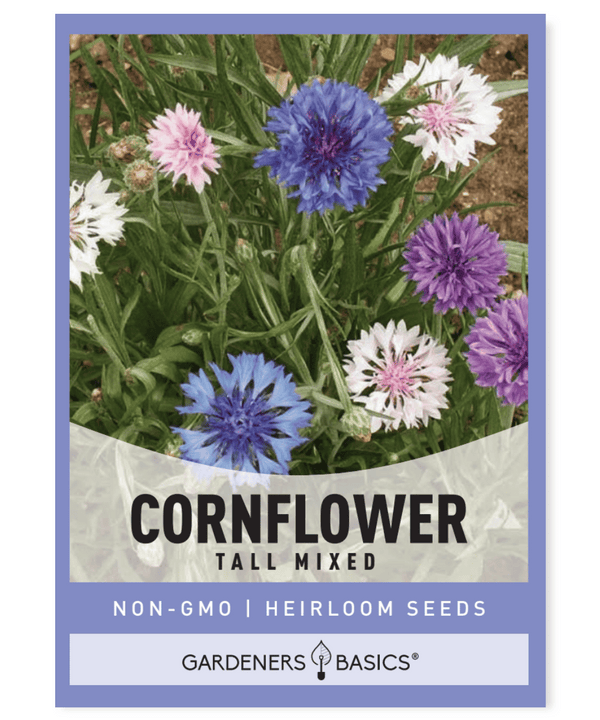
$2.49
Bachelor Button Tall Mixed Cornflower Seeds – Heirloom, Non-GMO, Non-Hybrid, Open-Pollinated Grow a breathtaking array of vibrant blue, pink, white, and purple blooms with our Bachelor Button Tall Mixed Cornflower Seeds, perfect for adding charm to gardens, borders, and wildflower… read more
6. Pest and Disease Control
Cornflowers are relatively low-maintenance, but they can occasionally be affected by pests and diseases. Here are some common issues and how to address them:
- Powdery mildew: This fungal disease appears as a white, powdery substance on the leaves. Prevent it by ensuring good air circulation and avoiding overhead watering. If necessary, apply a fungicide according to the manufacturer's instructions.
- Aphids: These small insects can be controlled by releasing beneficial insects like ladybugs or applying insecticidal soap.
- Slugs and snails: Handpick these pests or use organic slug bait to keep them at bay.
7. Harvesting and Enjoying Your Cornflowers
Cornflowers make excellent cut flowers and can be harvested for use in bouquets or arrangements. Follow these tips for the best results:
- When to harvest: Cut cornflowers in the morning when they're fully hydrated, and choose flowers with fully open petals.
- How to cut: Use clean, sharp scissors or pruning shears to cut the stem at an angle, just above a leaf node or branching point.
- Vase life: To extend the vase life of your cut cornflowers, change the water every two days and trim the stems regularly.
8. Cornflower Plant Characteristics
To wrap up this guide, here's a quick overview of cornflower plant characteristics:
- History of the Seed: Cornflowers have been cultivated for centuries and were historically used as a medicinal plant and dye source.
- Days till maturity: 80-100 days
- Planting depth: 1/8 inch
- Plant spacing: 12 inches
- Days to germination: 7-14 days
- Start indoors or direct sown: Both options work well for cornflowers
- Full sun or partial shade: Full sun
- When to harvest: When flowers are fully open, typically in the morning
- Height: 2-4 feet, depending on the variety
- Width: 1-2 feet, depending on the variety
With this comprehensive guide, you're now ready to grow cornflowers from seed and add these charming flowers to your garden. Whether you're a seasoned gardener or a beginner, these easy-to-grow blooms will reward you with their vibrant colors and delightful presence throughout the growing season.
 Frequently Asked Questions - How to Grow Cornflowers from Seed
Frequently Asked Questions - How to Grow Cornflowers from Seed
Here are some frequently asked questions about growing cornflowers from seed:
Q1: Are bachelor buttons the same thing as cornflowers?
A: Yes, bachelor buttons and cornflowers are the same plant, Centaurea cyanus. They are also sometimes called bluebottle, boutonniere flower, or hurtsickle.
Q2: When is the best time to plant cornflower seeds?
A: The best time to plant cornflower seeds outdoors is in early spring when the soil temperature reaches at least 50°F (10°C). If starting indoors, plant seeds 4-6 weeks before the last expected frost date.
Q3: When to start cornflower seeds indoors?
A: Start cornflower seeds indoors 4-6 weeks before the last expected frost date in your area. This will give the seedlings enough time to grow before transplanting them outdoors.
Q4: Can cornflowers be grown in partial shade?
A: While cornflowers prefer full sun, they can tolerate some light shade. However, plants grown in partial shade may be less vigorous and produce fewer blooms.
Q5: How long does it take for cornflower seeds to germinate?
A: Cornflower seeds typically germinate within 7-14 days, depending on the growing conditions, such as temperature and moisture.
Wildflower, Perennial, & Annual Flower Seed Kit | 35 Variety Pack
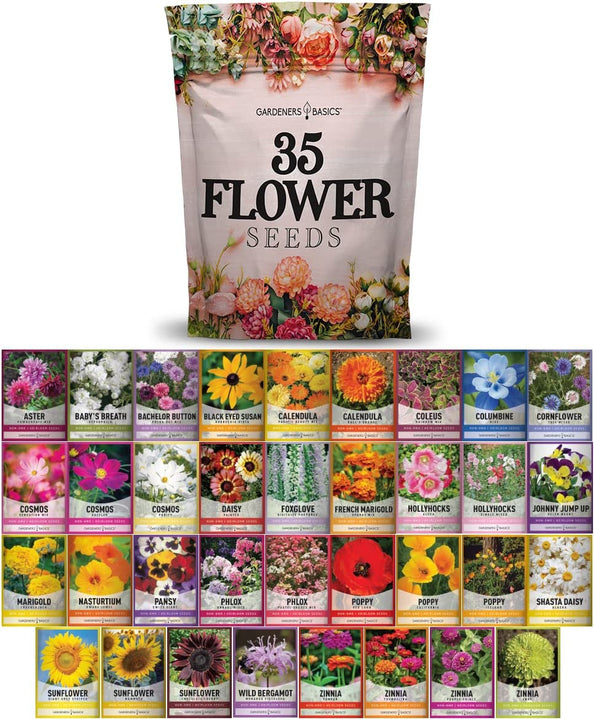
$29.95
$49.95
35 Flower Seeds Variety Pack – Heirloom, Non-Hybrid, Non-GMO, Open-Pollinated – Perfect for Pollinator-Friendly Gardens Transform your garden with our 35 Flower Seeds Variety Pack, offering a stunning and diverse selection of heirloom, non-hybrid, and non-GMO seeds. Each variety in… read more
Q6: Where can I find cornflower seeds for sale?
A: Cornflower seeds can be purchased online from reputable seed companies or at your local garden center or nursery.
Q7: Can I grow cornflowers in containers?
A: Yes, cornflowers can be successfully grown in containers. Choose a well-draining potting mix and ensure the container has drainage holes to prevent waterlogging. Dwarf varieties, like the Polka Dot Mix, are particularly well-suited for container gardening.
Q8: How do I prevent powdery mildew on my cornflowers?
A: To prevent powdery mildew, ensure your cornflowers receive adequate air circulation and avoid overhead watering. If necessary, apply a fungicide according to the manufacturer's instructions to control the disease.





